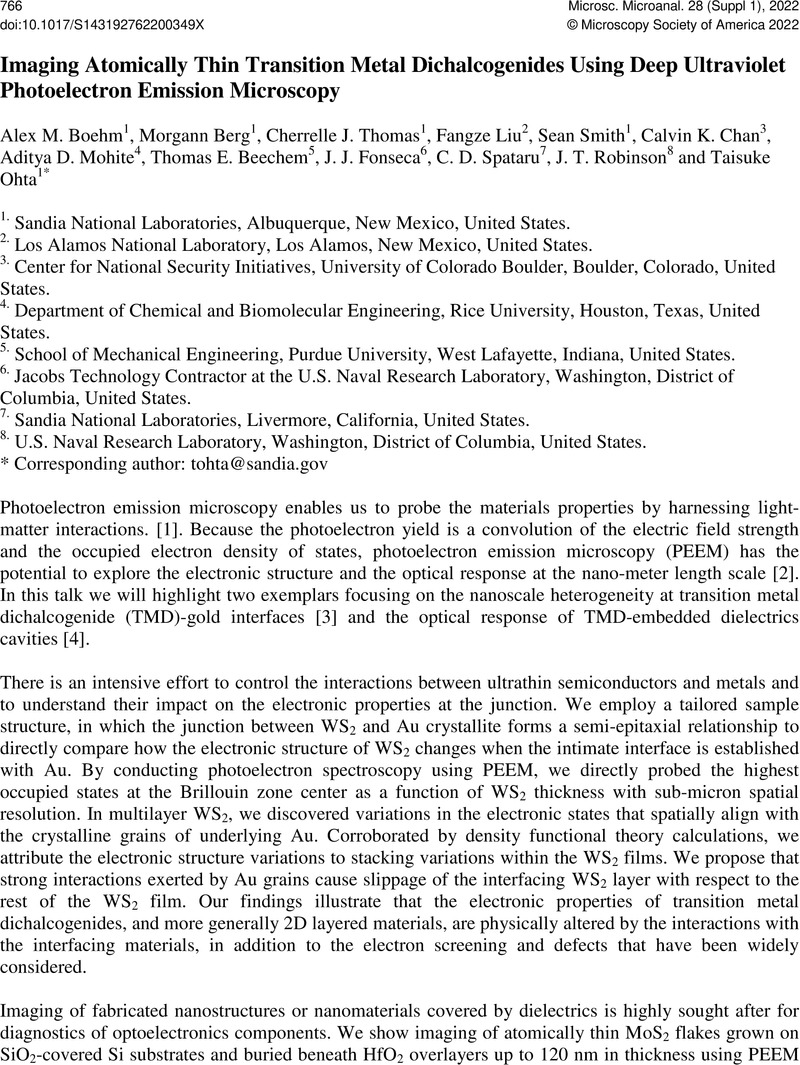We acknowledge insightful discussions with N. Bartelt, M. B. Sinclair, and W. T. S. Luk. We thank G. Copeland for his assistance in the PEEM measurement. The work at Sandia National Laboratories was supported by Sandia's LDRD program and the Center for Integrated Nanotechnologies user program, an Office of Science User Facility operated for the U.S. Department of Energy (DOE) Office of Science (DEAC04-94AL85000). The work at the U.S. Naval Research Laboratory (NRL) was funded by the Office of Naval Research. Sandia National Laboratories is a multimission laboratory managed and operated by National Technology and Engineering Solutions of Sandia, LLC., a wholly owned subsidiary of Honeywell International, Inc., for the U.S. Department of Energy's National Nuclear Security Administration under contract DE-NA0003525. The views expressed in the article do not necessarily represent the views of the U.S. Department of Energy or the United States Government.
Google Scholar